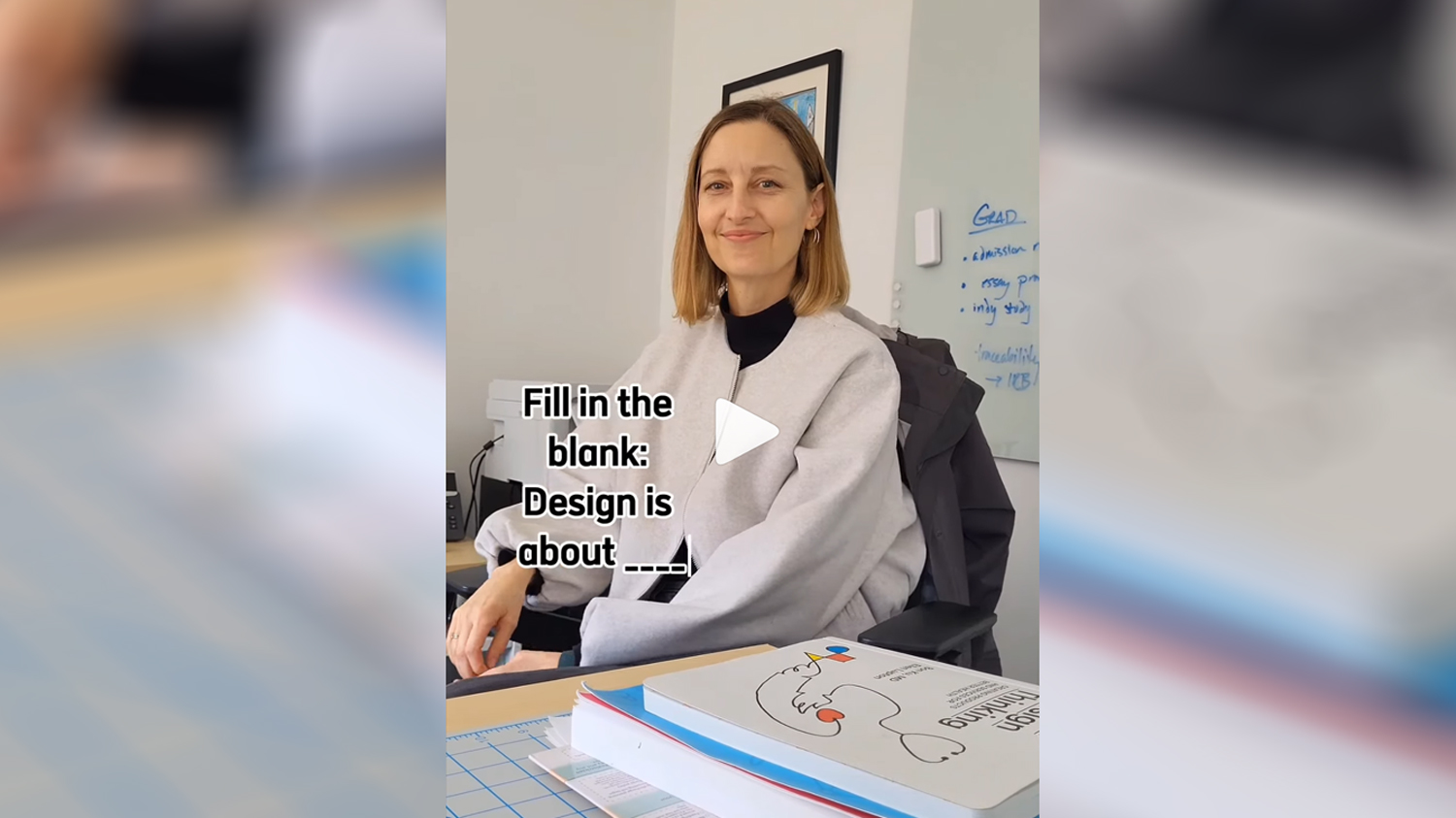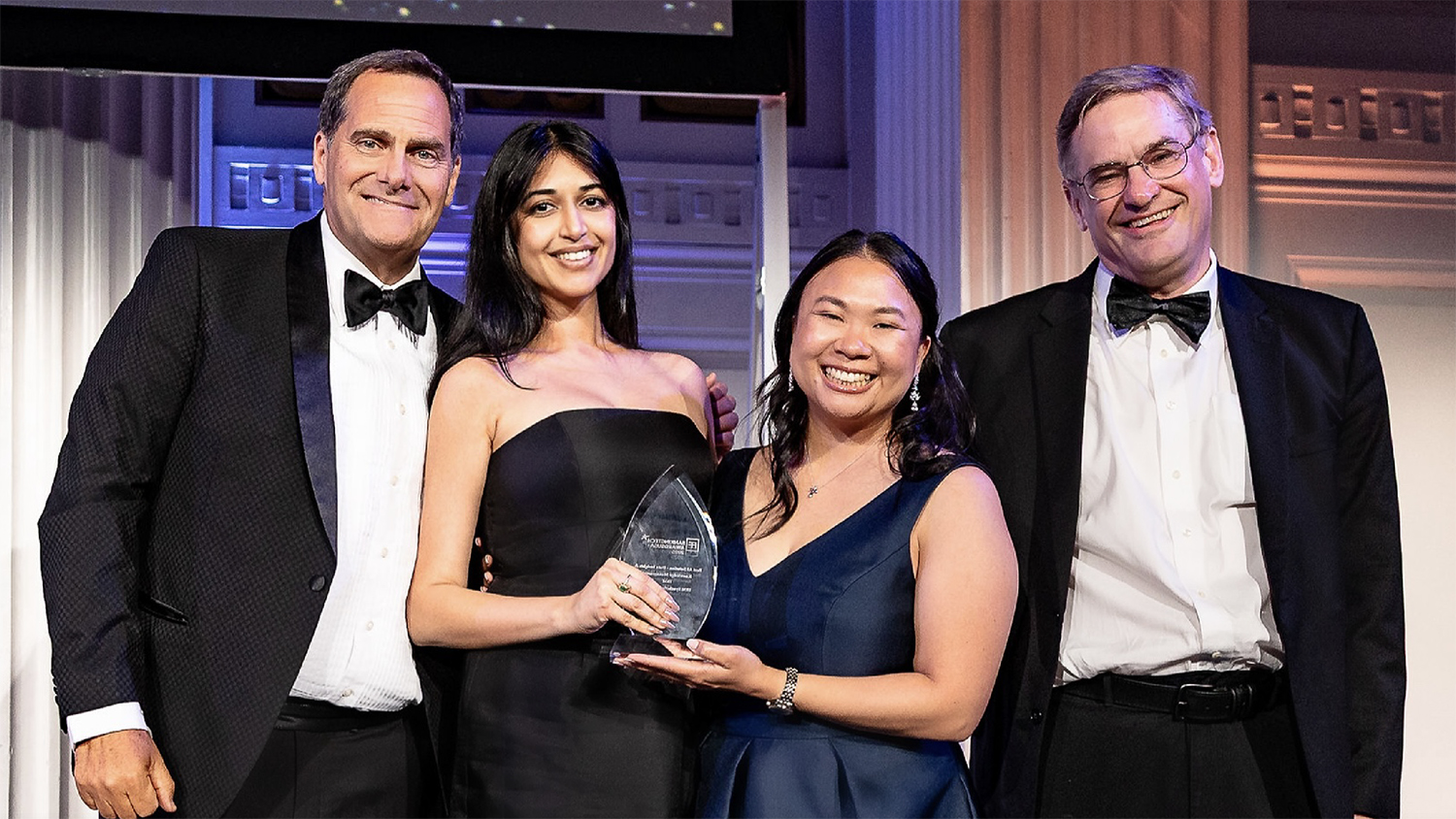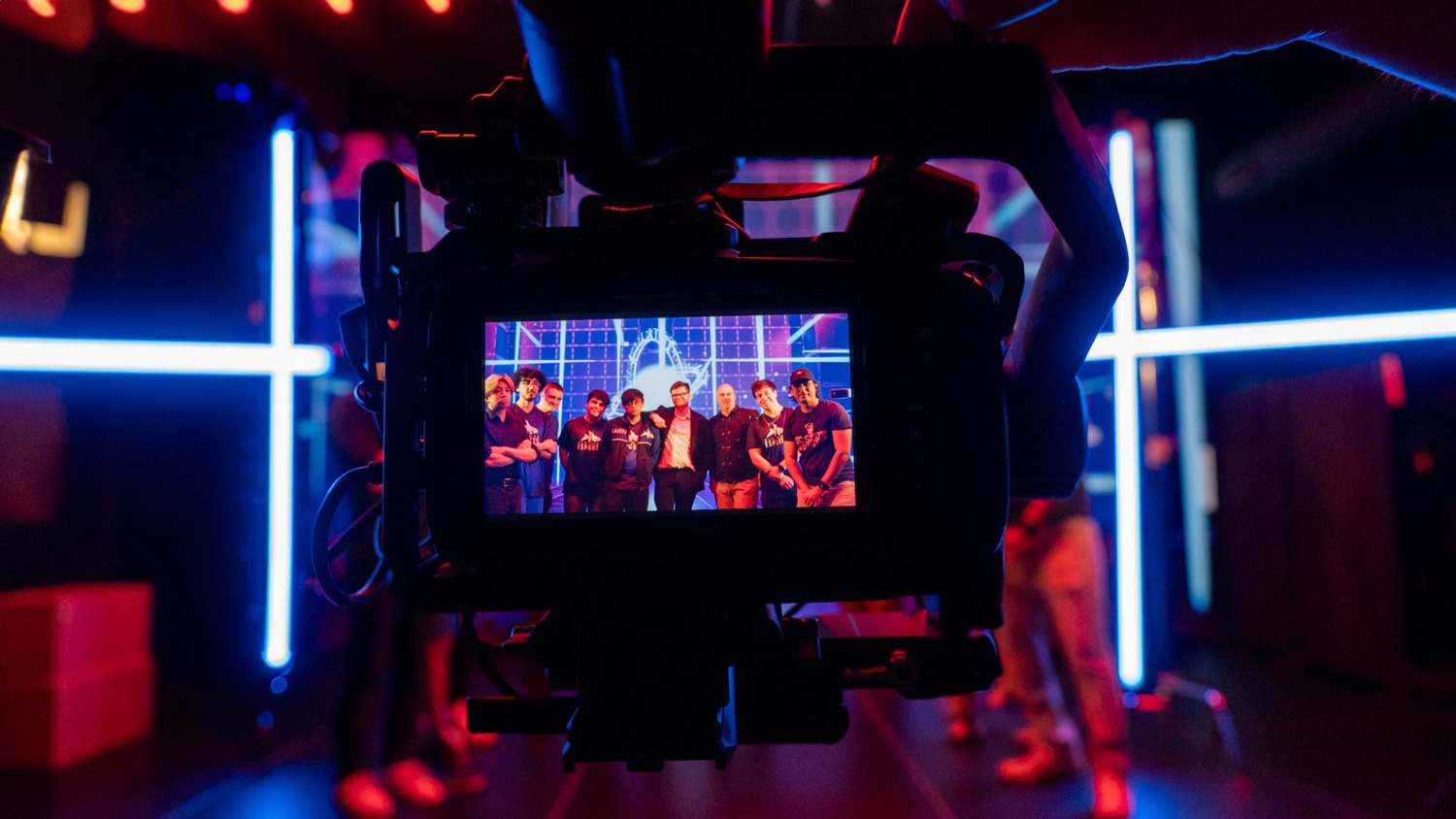“Design is about relationships” – Kelly Umstead named 2024-25 University Faculty Scholar
Kelly Umstead, MID faculty member and director of graduate programs for industrial design, was recently named one of NC State’s 2024-25 University Faculty Scholars. We’re excited to highlight Kelly’s achievements in the college and learn more about her.

Kelly Umstead, MID faculty member and director of graduate programs for industrial design, was recently named one of NC State’s 2024-25 University Faculty Scholars. The program recognizes and rewards emerging academic leaders who demonstrate significant achievement. We’re excited to highlight Kelly’s achievements in the college and learn more about her.
Since the University Faculty Scholars program began in 2012, 278 faculty have received this honor. Here’s the most recent class of scholars.
Q1: Tell me about your career path, starting with an engineering background and ending up in design.
I studied engineering in college because I enjoyed math and science, and chose biomedical engineering as my major because it felt the most closely connected to people. I have always been interested in people and the way they interact with their environments.
When I was in grad school at Marquette University, I worked in a motion analysis lab where we analyzed the gait of children with cerebral palsy – studying their kinematics and kinetics. That was when I really started to think about design. Kids would come into our lab with assistive devices like walkers or crutches, and I began to think about what life looked like for them outside of the lab and the way these devices helped or hindered them. I started to wonder, ‘Who designs these products?’ ‘Why do they look like that?’ and ‘Have they ever asked a kid about these devices?’
“Industrial design transformed the way I thought about problem-solving.”
A friend who studied architecture recommended I explore industrial design as a career. I found that it aligned with my interests, so I applied for graduate school (again). Industrial design transformed the way I thought about problem-solving. Design made me think about things from a different perspective. I like observing people and seeing how they respond to their world, and that’s what led me to industrial design.
Q2: It seems like a lot of your passion for design is based on your desire to help people. How has this passion evolved as you’ve progressed in your career and as you’ve moved into teaching?
When I started out in design, I was very focused on the object itself– what it looks like, how it functions, how it’s made. That’s your job as an industrial designer! Then, as you become comfortable and adept at that, you start to look at things more broadly. I’m always thinking about who’s using the product, the context of use and practical factors like how it’s cleaned, stored and disposed of.
These are the kinds of questions we introduce to our students. Over time, you realize the broader impact of design. It’s misleading to think you are creating a single object. That object is part of a system and you’re rarely just making one. So what’s the impact of that on people and the environment?
I like to encourage students to be conscious and conscientious designers. I want them to be aware of the decisions they’re making. Even if they identify a factor that they choose to ignore, they’re still making that conscious decision. I want them to be conscious of these decisions and also conscientious about the downstream effect on people and the world.
Much of my work is in healthcare, where you are usually not just designing for one user. It’s an entire ecosystem of people, caregivers and staff. If any link in that system is not respected by a design intervention, then the deliverable doesn’t get to the person it is intended to benefit. Addressing those connections is critical to making a real impact.
Q3: Is there a particular project you’re proud of?
I’m proud of my work in maternity care because I think it’s an area that is important and needs love and attention. I have the privilege to collaborate with amazing colleagues, including Professor Carolina Gill at NC State, Dr. Kristin Tully and Dr. Alison Stuebe at UNC Chapel Hill and many others. I think this work is meaningful and necessary.
But what gives me the most pride is the work of my students! Two projects that started in my classes have now become startups. They’re both in the medical device space – where you have to be innovative, brave and tenacious.
One of these projects was the brainchild of Sandeep Bhatt [MID ‘19]. In my studio course on home-use medical devices, Sandeep identified an unmet need in vocal therapy. He found that patients were using drinking straws as tools for vocal training and rehabilitation. He spent the semester developing concepts, which turned into another semester, and eventually became his final project. SonoVoice is now a startup, with Sandeep as CEO, working alongside leaders in vocal therapy to advance his idea.
Another inspiring team is Abby Sheer [MID ‘22], Dr. Alan Rosenbaum, MSMBE, OBGYN hospitalist at UNC Rex Healthcare and Chandler Sizer, MSMBE, business development engineer at Gilero, who addressed dyspareunia in women. They identified the issue and designed a concept. Abby and Alan went on to co-found Cervu, where they have been especially successful in obtaining grants to continue to fund their startups.
It’s exciting to see these designers out in the world, applying their skills and passion to solve real problems and help the communities they’ve identified. It’s incredibly rewarding to watch them make a difference through design.
Q4: The university faculty scholar award acknowledges faculty who contribute “significant achievement.” What does achievement mean to you?
I do an exercise at the beginning of orientation each year with our graduate students. I give them an open prompt: “Design is all about ______.” They get one word (or one hyphenated word) to fill in that blank. I’ve done this for a long time, and I’ve received many answers – often about problem-solving and creativity. Both of which are true!
I usually don’t offer my own word, but to me, design is all about relationships. There’s always an interaction. You cannot do it by yourself. And when you collaborate with others, there’s always an opportunity to do it better. That’s what I find most rewarding. I love working with others because it leads to stronger outcomes.
“To me, design is all about relationships. You cannot do it by yourself.”
On the relationship side of things, you’re engaging with folks in marketing, human factors, manufacturing, regulatory or even clinical teams. You have to be able to communicate with all of them. Designers are very good at communicating verbally and visually, but ultimately it’s about people – the relationships you build and how to cultivate those relationships to achieve shared goals. So, for me, achievement is about creating successful relationships, building a strong network, and recognizing that the connections you foster today can lead to unexpected opportunities in the future.
See Kelly’s answers in a video on our Instagram!
- Categories:


